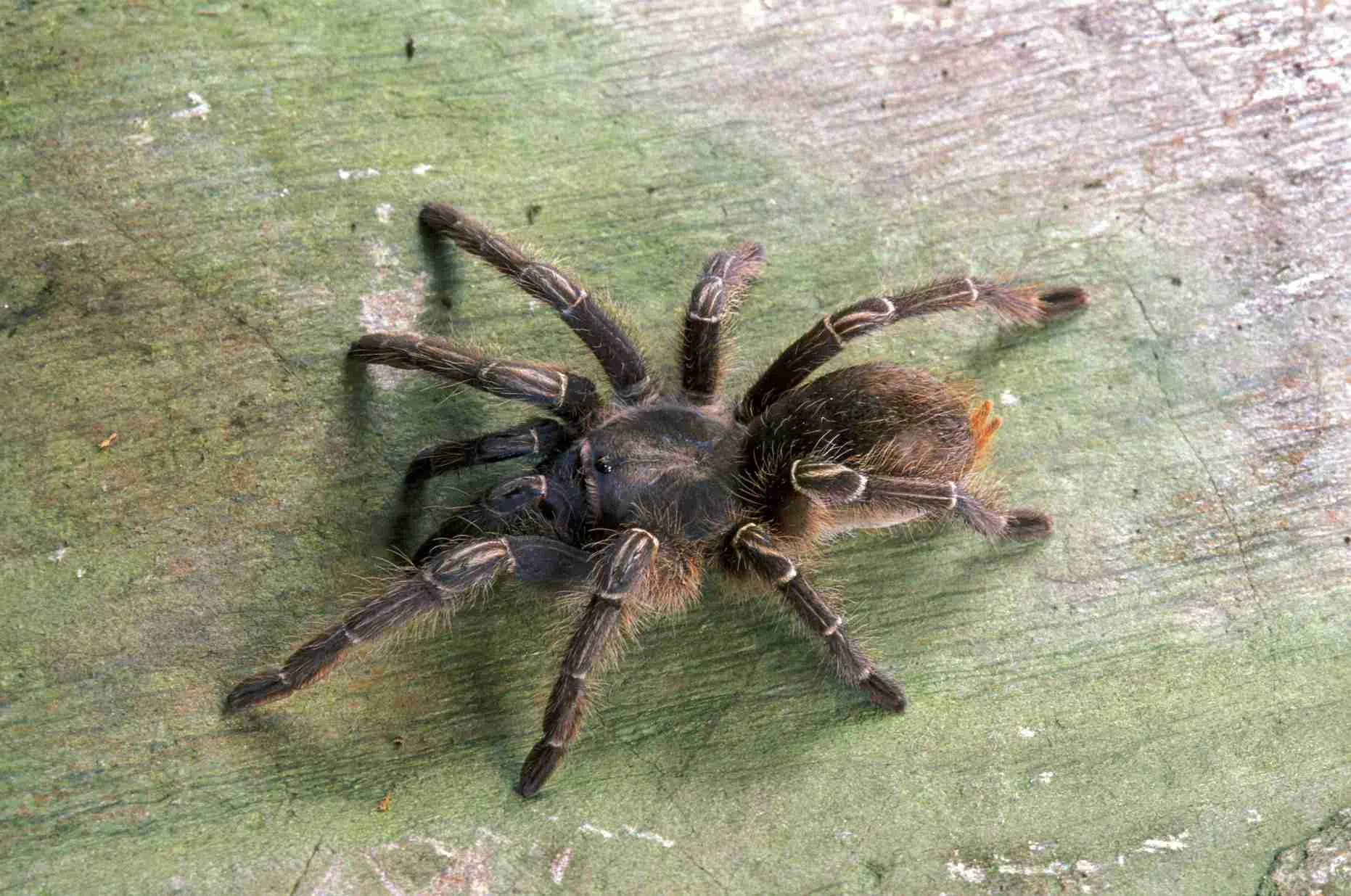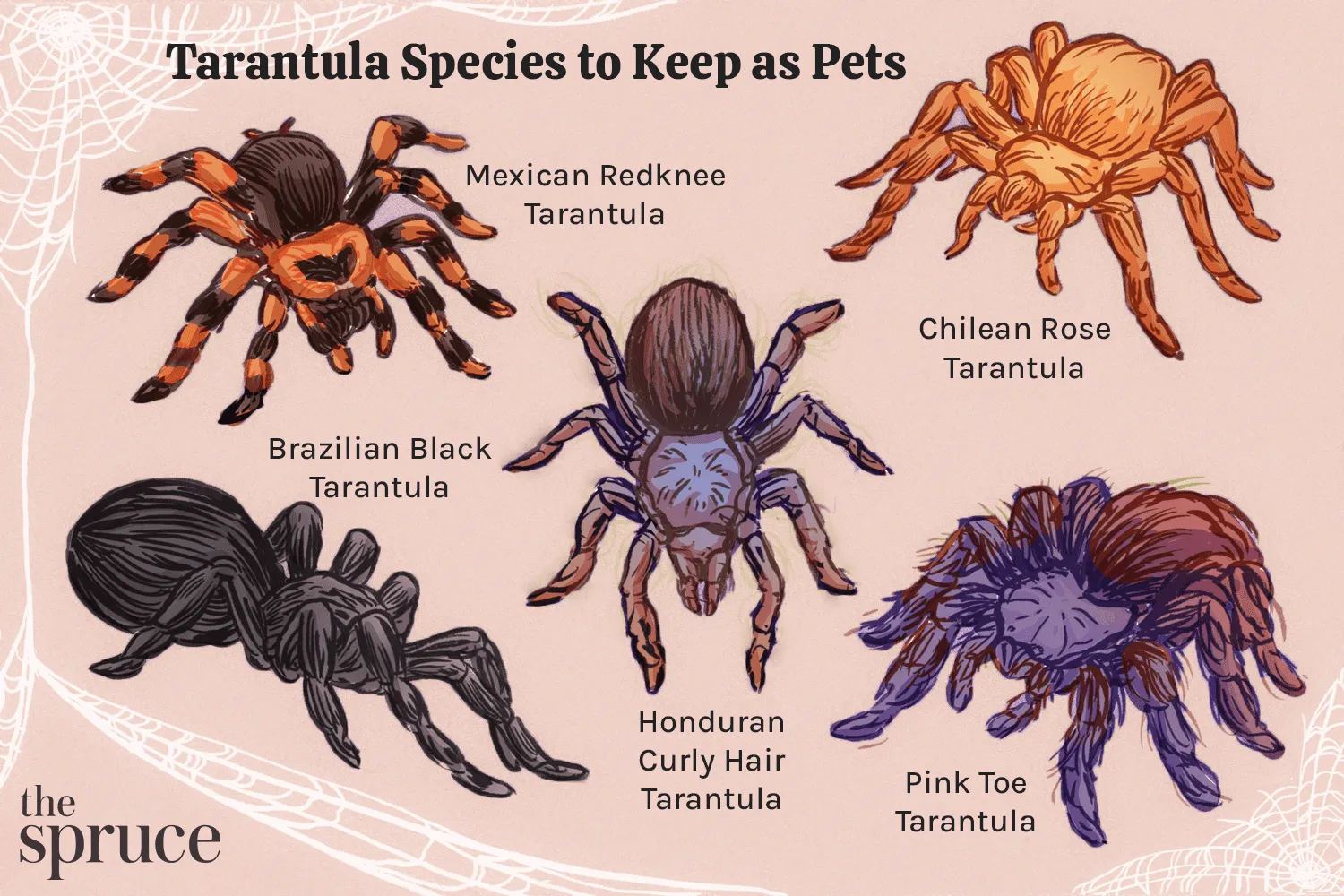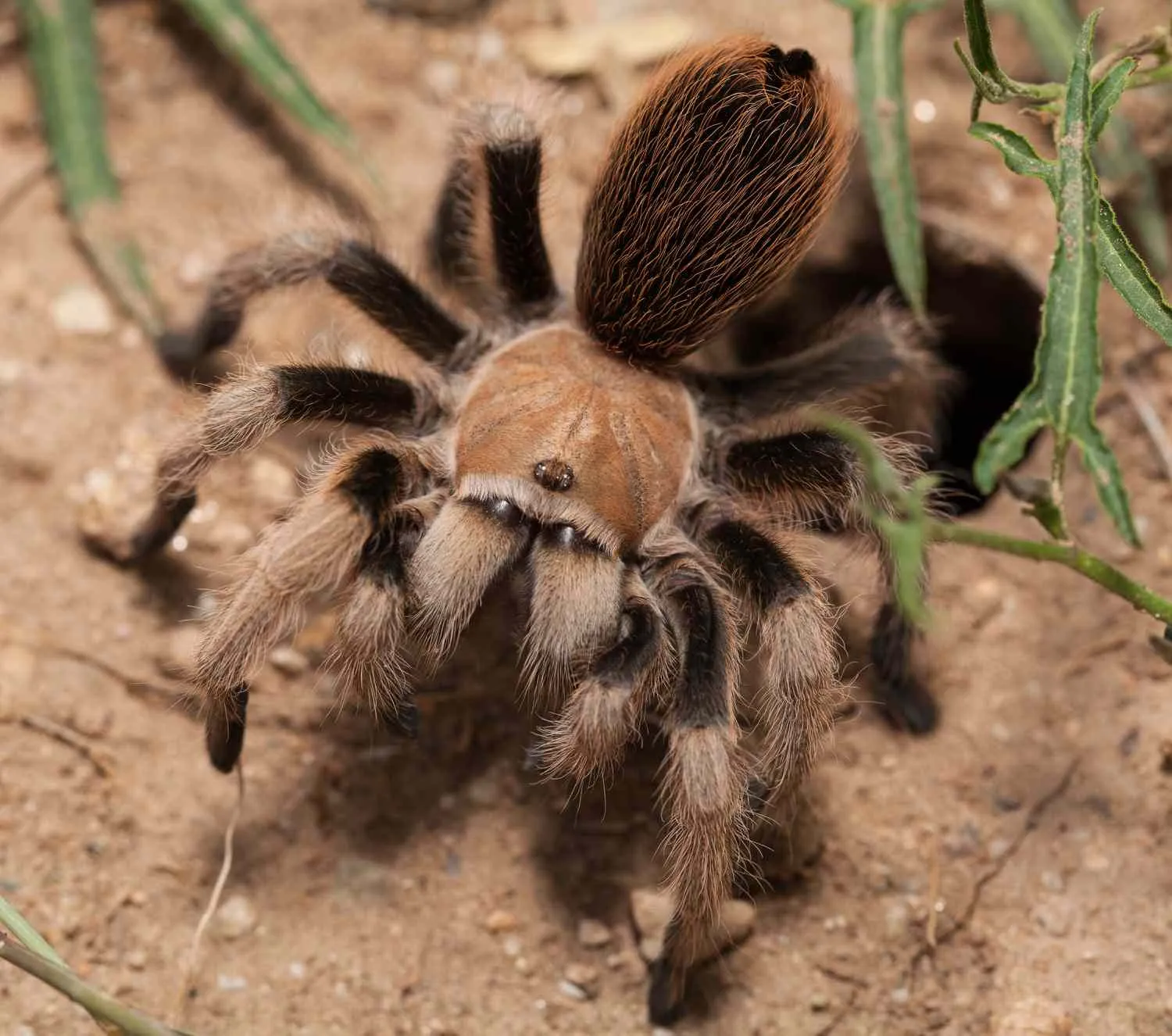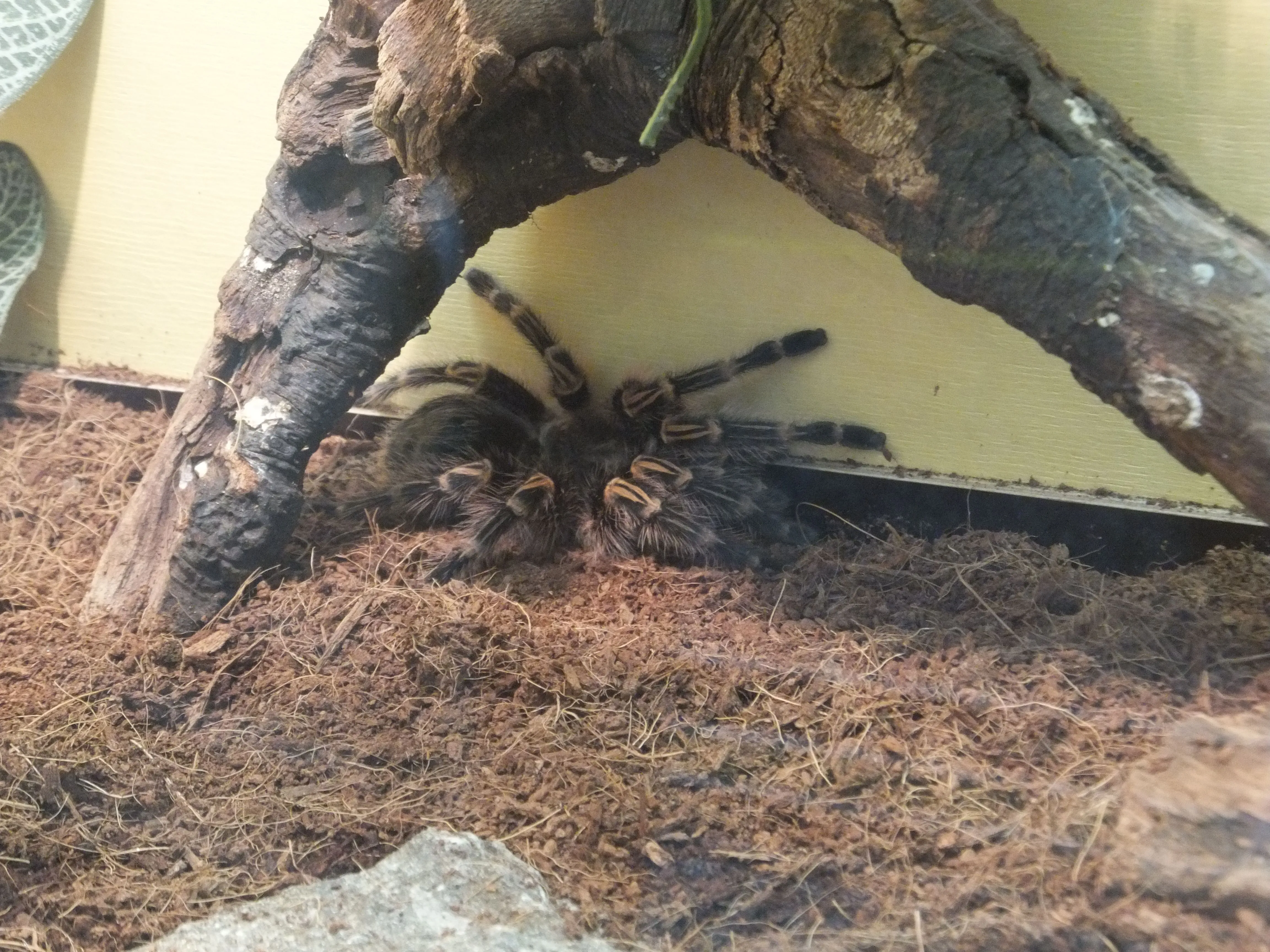Choosing Your Tarantula
Bringing a tarantula into your home is an exciting decision, but it’s crucial to start with careful consideration. These fascinating creatures can make rewarding pets, but they require specific care to thrive. This comprehensive guide will walk you through everything you need to know about tarantula care, from selecting the right species to providing a suitable habitat and ensuring their health and well-being. Choosing the right tarantula is the first step towards a successful and enjoyable experience as a tarantula owner. With proper research and preparation, you can create a thriving environment for your new eight-legged friend.
Beginner-Friendly Tarantula Species
For those new to tarantula ownership, some species are more manageable than others. These species tend to be hardier, have milder temperaments, and are less prone to stress. The Chilean rose hair tarantula (Grammostola rosea) is often recommended as a great beginner species due to its docile nature and relatively simple care requirements. Other excellent choices include the Mexican red knee tarantula (Brachypelma hamorii), which is also known for its beautiful coloration and calm demeanor, and the curly hair tarantula (Tliltocatl albopilosus), known for its fluffy appearance and generally relaxed behavior. These species are typically more tolerant of minor environmental fluctuations, making them ideal for beginners who are still learning the ropes of tarantula care. They also have a lower likelihood of defensive behaviors, such as biting or kicking urticating hairs, compared to some more aggressive species.
Things to Consider Before Buying

Before you acquire a tarantula, several factors demand your attention. Firstly, consider your lifestyle and whether you can commit to the specific needs of a tarantula. They require consistent care, including regular feeding, habitat maintenance, and monitoring of temperature and humidity. Research the lifespan of the species you’re interested in, as some tarantulas can live for several years, even decades. This long-term commitment is crucial. Secondly, ensure you have adequate space for the enclosure. Tarantulas need appropriately sized habitats to feel secure and thrive. Furthermore, factor in the costs associated with tarantula ownership, including the initial cost of the tarantula, enclosure, substrate, decor, and ongoing expenses for food and supplies. Finally, familiarize yourself with local regulations, as some areas may have restrictions on owning exotic pets. Thorough preparation and understanding these factors will significantly enhance your ability to provide a healthy and happy life for your tarantula.
Setting Up a Tarantula Habitat
Creating the perfect habitat is essential for your tarantula’s well-being. The enclosure should mimic the tarantula’s natural environment as closely as possible, providing a safe and comfortable space. The size, type, and features of the enclosure all contribute to the tarantula’s health and happiness. Careful attention to these details can significantly reduce stress and promote the natural behaviors of your tarantula, ensuring it can live a long and fulfilling life. The goal is to create a secure and enriching environment that fulfills the tarantula’s needs and allows you to observe its fascinating behavior.
Enclosure Size and Type
The size of the enclosure is paramount. It should be large enough for the tarantula to move around comfortably, but not so large that it feels exposed and stressed. As a general rule, the enclosure should be at least three times the tarantula’s leg span in length and width. For arboreal species (those that live in trees), the height of the enclosure is also important. Common enclosure types include glass terrariums and plastic containers. Glass terrariums offer excellent visibility and are generally durable, but they can be more challenging to ventilate. Plastic containers are often more affordable and lightweight, and many have built-in ventilation. Ensure the enclosure has a secure lid to prevent escape. The enclosure should be appropriate for the species you have chosen, considering their specific needs for burrowing, climbing, and general activity.
Substrate and Decorations

The substrate forms the base of the tarantula’s habitat, providing a surface for walking, burrowing, and maintaining humidity. The substrate’s choice depends on the species’ needs. A good option for many terrestrial species is a mix of peat moss, vermiculite, and coconut fiber. These materials retain moisture well and allow the tarantula to burrow. Avoid using gravel or sand, as these can be abrasive and difficult for the tarantula to navigate. Include decorations like cork bark, branches, and artificial plants to provide hiding places and enrich the environment. These additions not only add visual interest to the enclosure but also allow the tarantula to feel secure. They can climb, hide, and generally interact with their surroundings, which is crucial for their mental well-being.
Temperature and Humidity
Maintaining the correct temperature and humidity levels is vital for your tarantula’s health. Most tarantulas thrive in temperatures between 75 and 85°F (24 to 29°C). Use a thermometer to monitor the temperature within the enclosure. You can use a heat lamp or a heat mat (placed on the side or back of the enclosure, not underneath) to maintain the desired temperature. Humidity levels should also be monitored and adjusted according to the species’ requirements. Use a hygrometer to measure humidity. You can increase humidity by misting the enclosure with dechlorinated water or by providing a water dish. Ensure there is proper ventilation to prevent mold growth. The specific temperature and humidity requirements vary depending on the species of tarantula, so it’s essential to research your particular tarantula’s needs.
Feeding Your Tarantula
Feeding your tarantula correctly is key to its health and growth. Tarantulas are opportunistic predators and typically eat insects. Proper feeding ensures they receive the nutrients they need. The types of insects, how often to feed, and the water sources are all key factors.
What Tarantulas Eat

Tarantulas are primarily insectivores, meaning their diet consists mainly of insects. The most common and readily available food sources are crickets and mealworms. However, a varied diet is beneficial. You can also feed them roaches (such as dubia roaches), waxworms (as treats), and even pre-killed pinkie mice for larger species. Ensure the insects are gut-loaded before feeding them to your tarantula. Gut-loading involves feeding the insects nutritious food for at least 24 hours before offering them to your tarantula, ensuring the spider receives all essential nutrients. Always remove any uneaten food within 24 hours to prevent mold and mites.
Feeding Frequency
Feeding frequency depends on the tarantula’s age, size, and species. Spiderlings (juvenile tarantulas) should be fed more frequently, usually 2–3 times per week. As they mature, the feeding frequency can be reduced. Adult tarantulas typically eat once or twice a week. Overfeeding can lead to health problems. Observe your tarantula’s abdomen; if it appears overly plump, reduce the feeding frequency. A healthy tarantula should have a moderately sized abdomen. Some tarantulas may refuse food for extended periods, especially before molting; this is normal. Always provide fresh, clean water, and adjust your feeding schedule based on your tarantula’s individual needs and activity levels.
Water and Hydration
Providing clean water is essential for your tarantula’s hydration and overall health. Always offer fresh water in a shallow dish, ensuring it’s easily accessible but won’t pose a drowning risk. Small tarantulas can use a bottle cap filled with water. For larger tarantulas, a shallow water dish is ideal. Regularly clean and refill the water dish to prevent bacterial growth and maintain water quality. In addition to a water dish, misting the enclosure can help maintain humidity levels. Be careful not to over-saturate the enclosure; the substrate should be moist but not waterlogged. Proper hydration is crucial for the tarantula’s molting process and overall well-being.
Tarantula Health and Handling

Maintaining your tarantula’s health involves understanding potential health issues and how to handle your tarantula safely. By being vigilant and observant, you can quickly identify and address any health concerns. Proper handling is key to prevent harm to both the tarantula and the handler.
Common Health Issues
Tarantulas can experience a range of health issues. Dehydration is a common problem, often caused by low humidity or a lack of fresh water. Ensure the enclosure has adequate humidity and a constant supply of clean water. Parasites, such as mites, can infest tarantulas. Regularly inspect your tarantula and its enclosure for signs of mites. If you notice mites, isolate the tarantula and clean the enclosure thoroughly. Fungal infections can develop if the enclosure is too humid and has poor ventilation. Maintain appropriate humidity levels and ensure proper ventilation. Always consult a veterinarian experienced in exotic animals if you suspect your tarantula is sick or injured. They can provide a diagnosis and appropriate treatment.
Safe Handling Practices
Handling a tarantula is generally discouraged unless necessary, as it can stress the spider and increase the risk of injury to both the tarantula and the handler. Tarantulas are fragile. If handling is unavoidable (e.g., for enclosure maintenance), do so cautiously. Always handle the tarantula close to the ground to minimize the distance it can fall. Use a soft brush to gently guide the tarantula into a container if you must move it. Avoid sudden movements or loud noises, as these can startle the tarantula. Before handling, wash your hands thoroughly to remove any scents or substances that could irritate the tarantula. Be aware of the tarantula’s defensive behaviors, such as kicking urticating hairs, and know how to react. Never handle a tarantula if you are unsure or uncomfortable, and prioritize the safety and well-being of both yourself and the spider.
Tarantula Molting Process

Molting is a natural and essential process for tarantulas, allowing them to shed their exoskeleton and grow. Understanding the molting process and how to care for your tarantula during this time is crucial to ensure its health and well-being. This process is a sign of a healthy, growing tarantula.
What to Expect During Molting
Tarantulas molt periodically throughout their lives. Younger tarantulas molt more frequently than adults. The molting process involves the tarantula shedding its old exoskeleton to reveal a new one underneath. Before molting, the tarantula may become inactive, stop eating, and may spend more time hiding. You might notice a darkening of the abdomen. The tarantula may also build a web mat or flip onto its back during the molting process. The molting process itself can take anywhere from a few minutes to several hours, depending on the tarantula’s size and the species. After molting, the tarantula will be very vulnerable, so it’s important to avoid disturbing it.
Caring for a Molting Tarantula
During the molting process, it’s crucial to avoid disturbing your tarantula. Do not feed your tarantula during this time, as it will not eat. Maintain the correct temperature and humidity levels in the enclosure. Ensure the tarantula has access to fresh water. Once the tarantula has molted, leave the old exoskeleton in the enclosure for a few days, as the tarantula may consume it for nutrients. After the tarantula has hardened, you can remove the old exoskeleton. Avoid handling the tarantula for at least a week after molting to allow its new exoskeleton to fully harden. It may take a few days for the tarantula to regain its full strength and appetite after molting.
